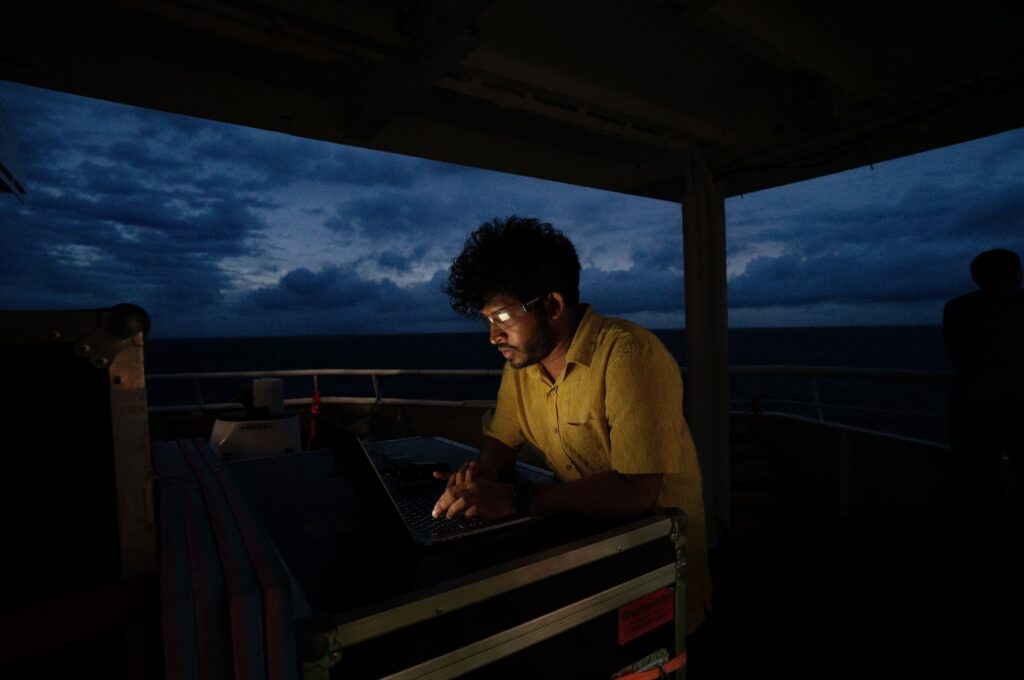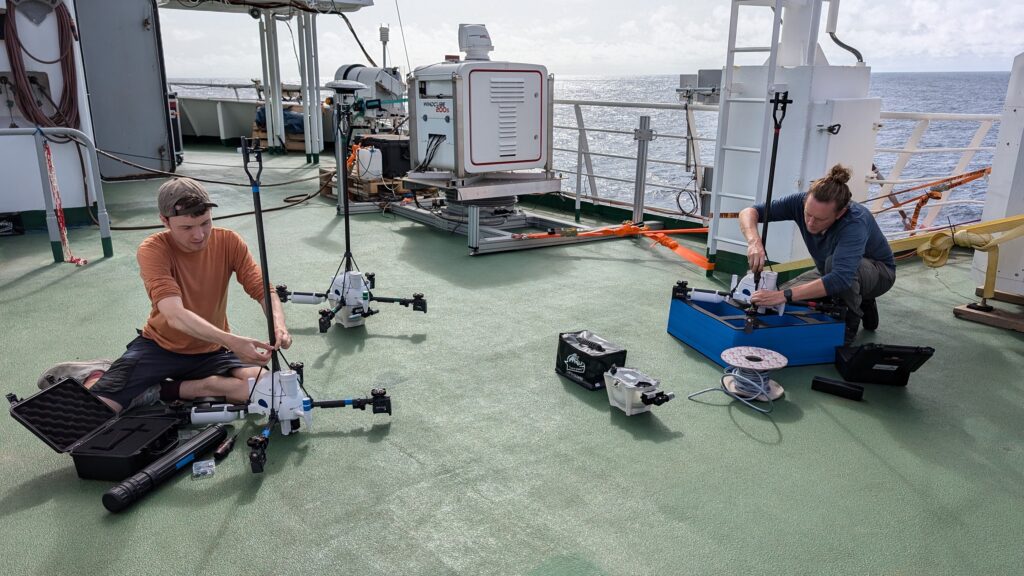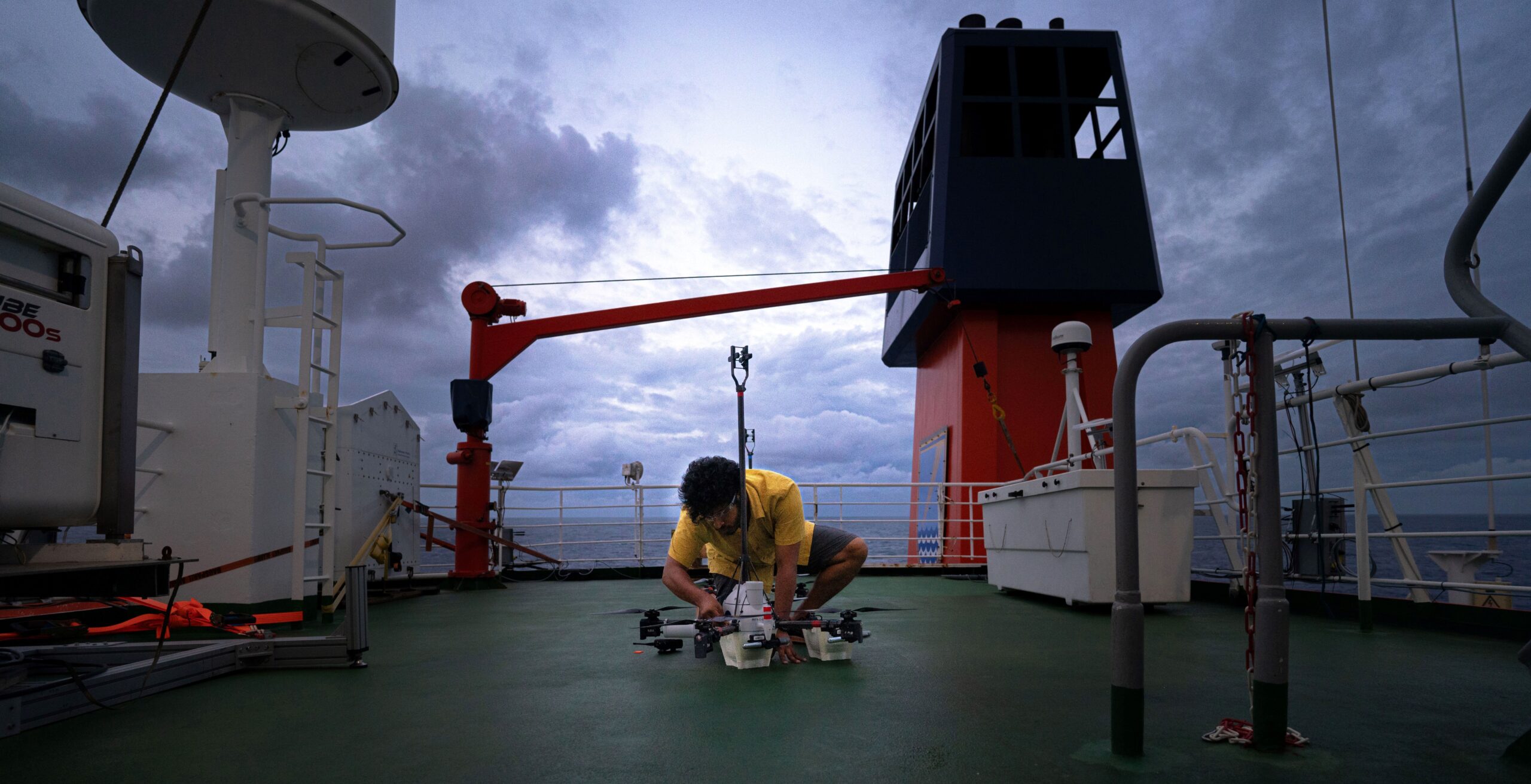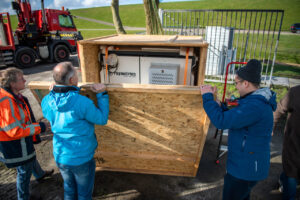Exploring the Intertropical Convergence Zone: A Journey into Atmospheric Phenomena
Assistant Professor Geet George from TU Delft’s Department of Geoscience and Remote Sensing recently embarked on a scientific expedition across the Atlantic Ocean on the German research vessel RV Meteor, navigating through the Intertropical Convergence Zone (ITCZ) as part of the international ORCESTRA campaign. The ITCZ, characterised by its complex atmospheric circulation, plays a significant role in global climate patterns.
During the voyage from Cape Verde to Barbados, George along with Rob Mackenzie and Owen O’Driscoll from TU Delft and an international team of scientists conducted in-situ and remote-sensing measurements to study the formation and behaviour of tropical rain clouds. Utilising advanced drones equipped with sensors, the TU Delft team collected novel data of the atmospheric boundary layer including within thick cloud layers, aiming to enhance understanding of cloud dynamics and their interaction with large-scale wind systems. These drones, designed specially for meteorological measurements, flew up to a height of 1.5 km above the surface while taking measurements of humidity, temperature, pressure, and winds. Also deployed on board the ship was Associate Professor Louise Nuijens’ Windcube, a sophisticated Doppler lidar which measures wind speed and direction. She deployed this in a unique configuration where the instrument looked sideways instead of the traditional upward looking configuration, requiring it to be on a motion-stabilizing platform. Such an arrangement enabled a volumetric look at wind measurements of the boundary layer.

The ITCZ is known for its variability, ranging from calm doldrums to intense storm conditions. The drones flown by George’s team were able to fly even during intense rain and strong winds, thus allowing for measurements that could contrast atmospheric conditions between the doldrums and the storms. Understanding the atmospheric processes in this area is crucial, as changes within the ITCZ are among the largest uncertainties in climate modelling. The ORCESTRA field observations are vital for improving climate models, which rely on accurate representations of cloud and convection processes.
The Ruisdael Observatory, a nationwide initiative in the Netherlands, supports such atmospheric research by providing comprehensive measurements of the atmosphere throughout the Netherlands. These observations, combined with high-resolution simulations, enable better weather and air quality forecasts. Ruisdael also provides mobile instrumentation for international campaigns. The Windcube sets an example: after its multi-year deployment at Cabauw and its cruise on the RV Meteor, it is now temporarily hosted at the Barbados Cloud Observatory. The Ruisdael Observatory also serves as a valuable test site. The initial testing and validation of the drone measurements were done at Cabauw to compare with the tower measurements.
The data collected during George’s and Nuijens’ expedition contribute to the broader goals of the Ruisdael Observatory, enhancing understanding of atmospheric dynamics and improving predictive models.
Reflecting on the expedition, George emphasised the importance of fieldwork in atmospheric science: “It is still important to be in the field and experience the processes we have been trying to simulate on our computers for years.” His hands-on approach, combined with technological advancements like drone-based measurements, bridges the gap between theoretical models and real-world observations, leading to more accurate climate predictions.
For a more detailed account of Geet George’s expedition and insights into the atmospheric processes of the ITCZ, read the full article here.
This research exemplifies the collaborative efforts within the atmospheric science community to address global climate challenges, with large scale research infrastructure like Ruisdael Observatory playing a pivotal role in supporting and advancing such endeavours.





